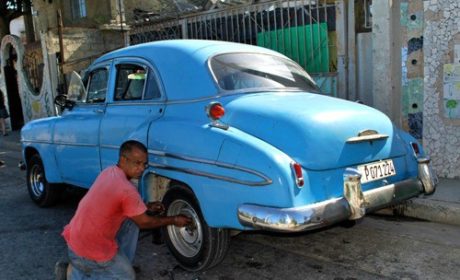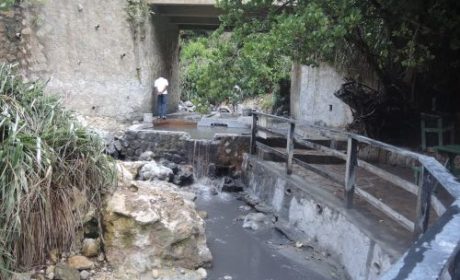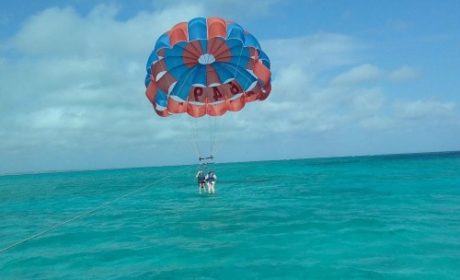If you’re a baby boomer looking for island fun in the Caribbean, keep reading to discover the best things to do in Curacao. My Itchy Travel Feet featured writer, Debi Lander of ByLanderSea, recently traveled to Curacao and writes about her experience exploring this lovely Caribbean island.
When you hear the word Curacao, do you think of the azure blue cocktail or the Caribbean Isle? Either way, you’re correct.
The breezy island entices with soft sandy beaches, expansive coral reefs, bountiful sea life, and the blue liqueur invented there in 1896. However, Curacao’s most memorable attraction comes from Willemstad, a capital city bursting with centuries-old Dutch architecture.
Curacao, pronounced “cure-a-sow, joins Aruba and Bonaire as the “C” in the affectionately known ABC islands. These Netherlands properties lie approximately 40 miles north of the coast of Venezuela.
This location places them on the outer fringes of the hurricane belt. Visitors avoid the storms, so anyone planning a trip to the Caribbean in the summer or late fall should head in their direction.
Table of Contents
Best things to do in Curacao
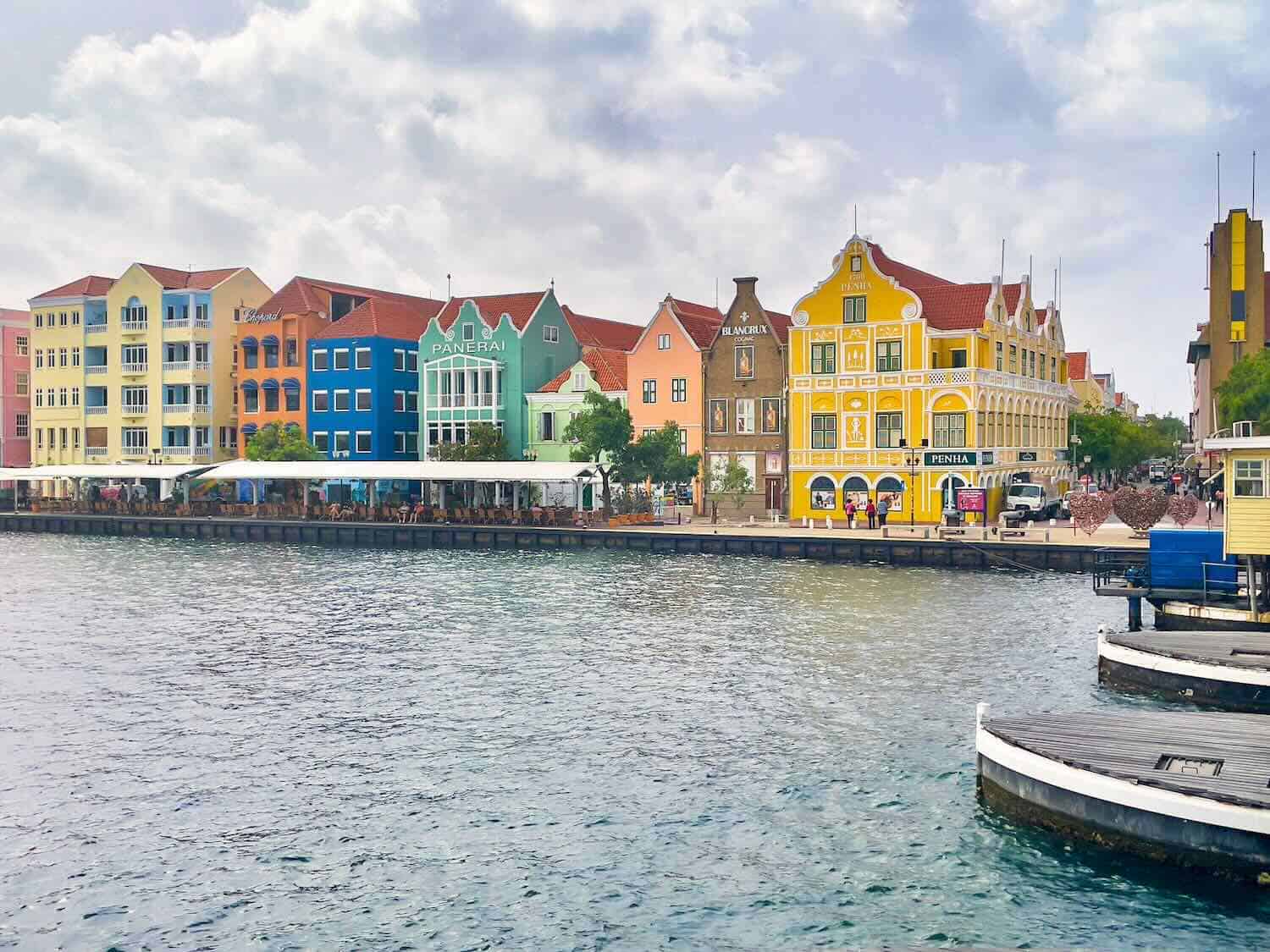
On a recent trip to Curacao, I was awe-struck by the colorful waterfront in the capital city of Willemstad. Yellow, pink, orange, blue, and green-hued historic houses in colonial Dutch architectural style create an unforgettable scene.
Unlike the white buildings that dominate many Greek and Mediterranean isles, Curacaoans prefer bright colors. In fact, an island legend claims a local doctor advised the government to mandate painting the buildings to save the resident’s eyesight. Later stories claim the doctor owned a paint company.
Nonetheless, centuries later, the iconic capital maintains the island’s fame along with a blend of many cultures. You’ll find approximately 165,000 residents of more than 50 nationalities who call the island home.
To understand the diversity, you’ll need first to understand the history of slavery. Sadly, from 1662 to 1815, the Dutch West India Company made Curaçao the center of the Atlantic slave trade triangle. They brought thousands of enslaved people from West Africa to the island before selling them elsewhere in the Caribbean, Europe, and the American colonies.
While this story may have been hushed in the past, guides now openly discuss it. Visit the Kura Hulanda Museum and Maritime Museum if interested in the island’s history.
Early Dutch colonists, including many Sephardic Jews fleeing persecution in Spain and Portugal, grew affluent from the slave trade. They built the impressive colonial buildings that remain in the capital, and all are protected as a UNESCO World Heritage Site.
Boomer Travel Tip
In today’s travel climate, trip insurance is a must. Compare policies and rates at InsureMyTrip.
Willemstad walking tour
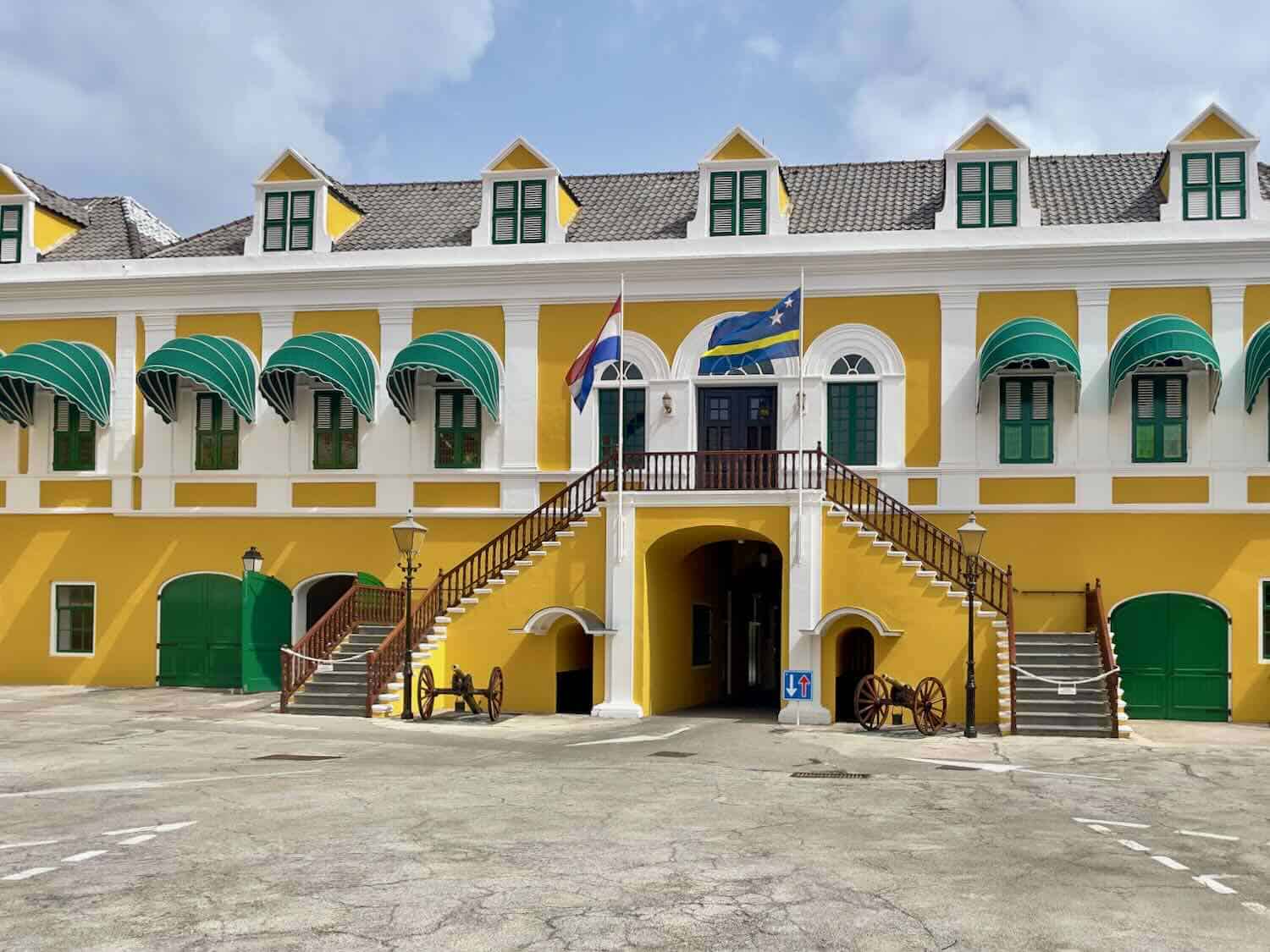
Willemstad is a walking city, so I strongly suggest a walking tour (private guides available from Tours by Locals or Viator).
Start at Fort Rif
Guides typically start at Fort Rif, constructed in 1820, at the entrance to the St. Ann’s Bay in the Otrobanda district. Make an effort to climb the stairs in the old defensive stronghold. You’ll get a marvelous overlook of historic Willemstad on the opposite side. However, the rear sections of the fort have been renovated to include shops and restaurants, an ideal spot for a sunset dinner.
Walk the Queen Emma floating footbridge
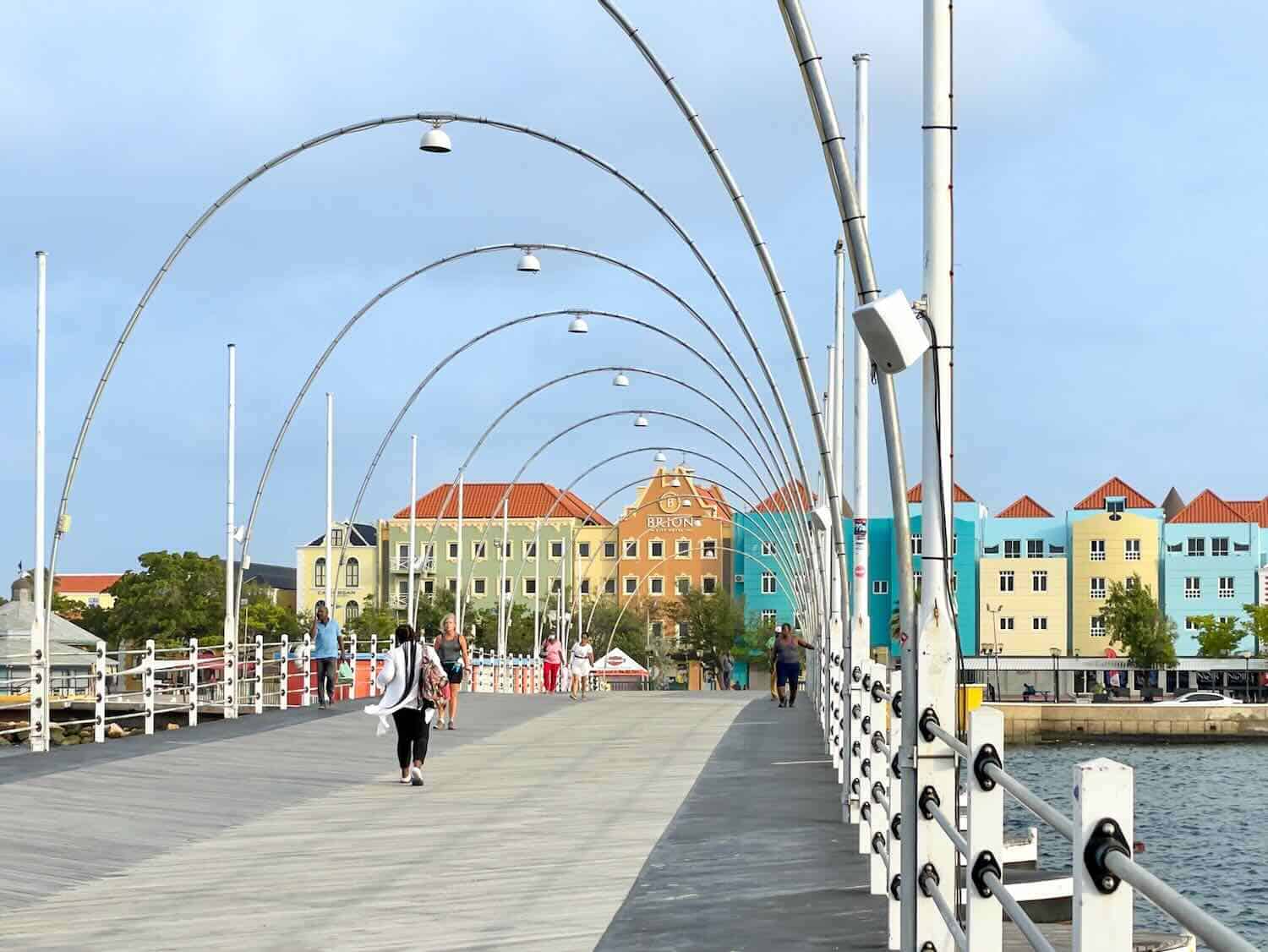
To cross over the waterway into the downtown Punda district, use the Queen Emma floating footbridge, or as the locals call her, the ‘Old Swinging Lady.’ The wobbly bridge, anchored by 16 pontoon boats and two motors, swings to one side if a ship needs to pass.
A horn will warn if the bridge is preparing to open. The movement is fascinating, but your crossing may be delayed.
Look up to view the Queen Juliana Bridge. It connects vehicular traffic between the two banks of the waterway. At 185 feet above the sea, it dominates as one of the highest bridges in the Caribbean.
Take a look at Fort Amsterdam
When approaching Punda, veer right for Fort Amsterdam, the oldest building dating back to 1635. A portion of the building serves as the governor’s home and office. The prime minister also maintains an office nearby.
Admire the Penha building
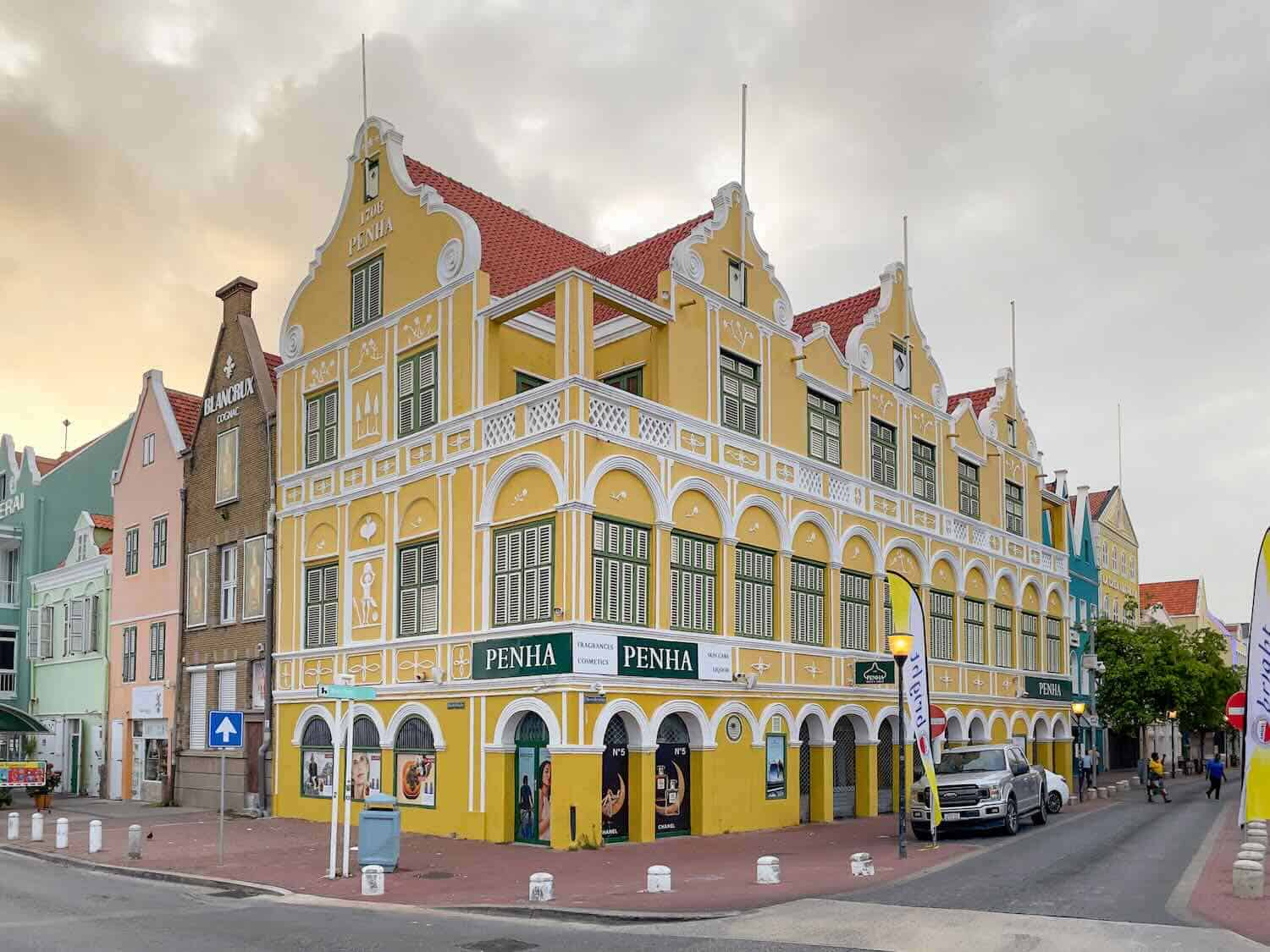
Everyone stops at the Penha building. The bright yellow structure with ornate white trim, and green shutters accenting its arcade, was built in 1708. Nearby, honeymooners may wish to lock their love by adding a padlock on one of three metal mesh hearts.
Enjoy the cobblestone pathways of Willemstad
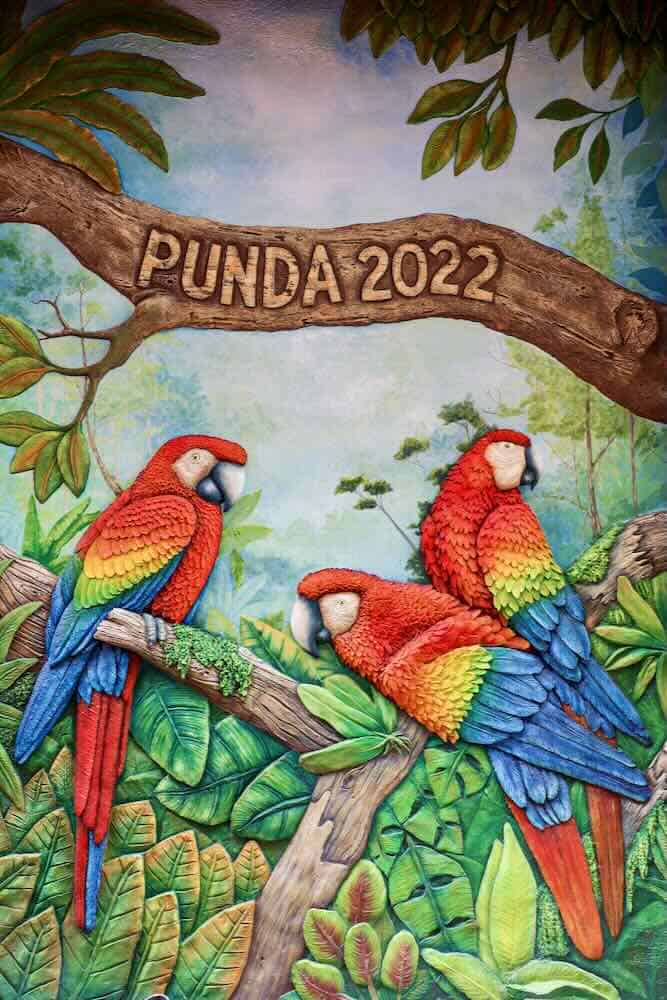
Your tour will meander through the pedestrian narrow cobblestone pathways of Willemstad. I loved the bustling old town full of quirky little shops, clothing retailers, art galleries, cooling fountains, large statues, and vibrant murals, some even 3-D.
Take a photo
Stop for photo ops at the larger-than-life installations of the words “Curacao” and “Dushi.” Dushi refers to the popular Papiamentu or local word for sweet or sweetie.
Tour Mikvé Israel-Emanuel Synagogue

The Mikvé Israel-Emanuel Synagogue (the Snoa), consecrated in 1732, is the oldest synagogue in continuous use in the Western Hemisphere. The temple welcomes visitors for a donation.
You’ll notice the exceptional architecture, antique mahogany furniture, and a most unusual sand floor. The sand symbolizes the desert where the Israelites wandered in the wilderness. A small but worthwhile Jewish Cultural Historical Museum sits across the courtyard.
Look for the Chichi statues
During the pandemic, big and busty statues of Chichi began appearing in Punda courtyards. Chichi sculptures represent the curvy, oldest sister in a Curacao family.
The local project supports the artistic community and continues to be crowd-funded. Stop by Serena’s Art Factory to learn more or make your own Chichi figurine.
Shop and party in the Pietermaai District
Nearby, two more historic urban districts date from the 18th century. The Pietermaai District began as residential but evolved into the “SoHo” of Curacao. The trendy area thrives with boutique hotels and a hotbed of nightclubs.
Explore Scharloo
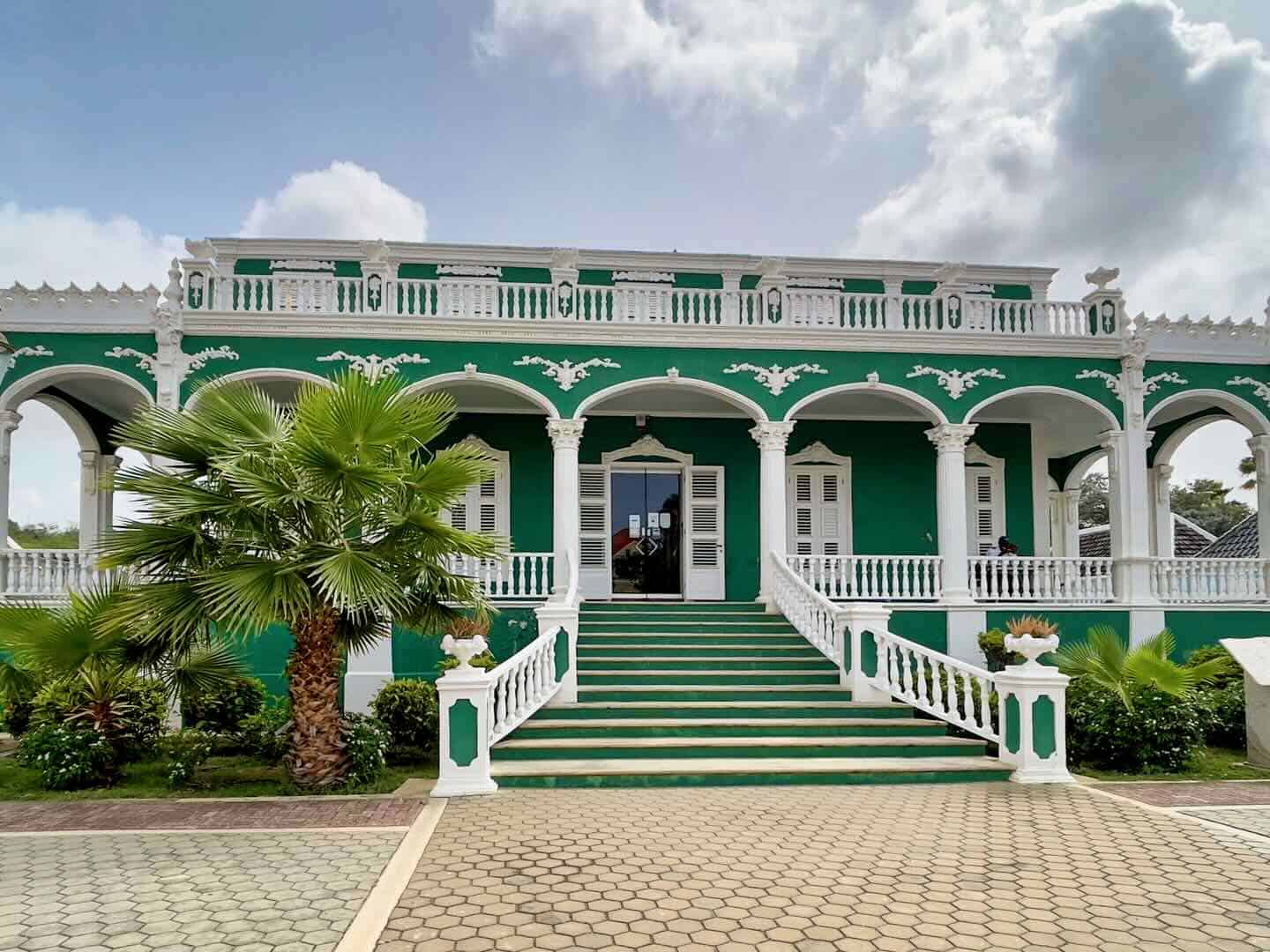
Scharloo showcases stunning homes, the extravagant mansions once inhabited by the island’s wealthiest merchants. As the city expanded, the tropical climate inspired changes to the architectural style. Galleries and porches were added to promote airflow. The result feels more like old Amsterdam, but one with palm trees and a kaleidoscope of Caribbean colors.
Boomer Travel Tip
MedjetAssist Members who are hospitalized 150 miles from home receive medical transport to a home-country hospital of choice. Memberships from $99.
Best beaches on Curacao
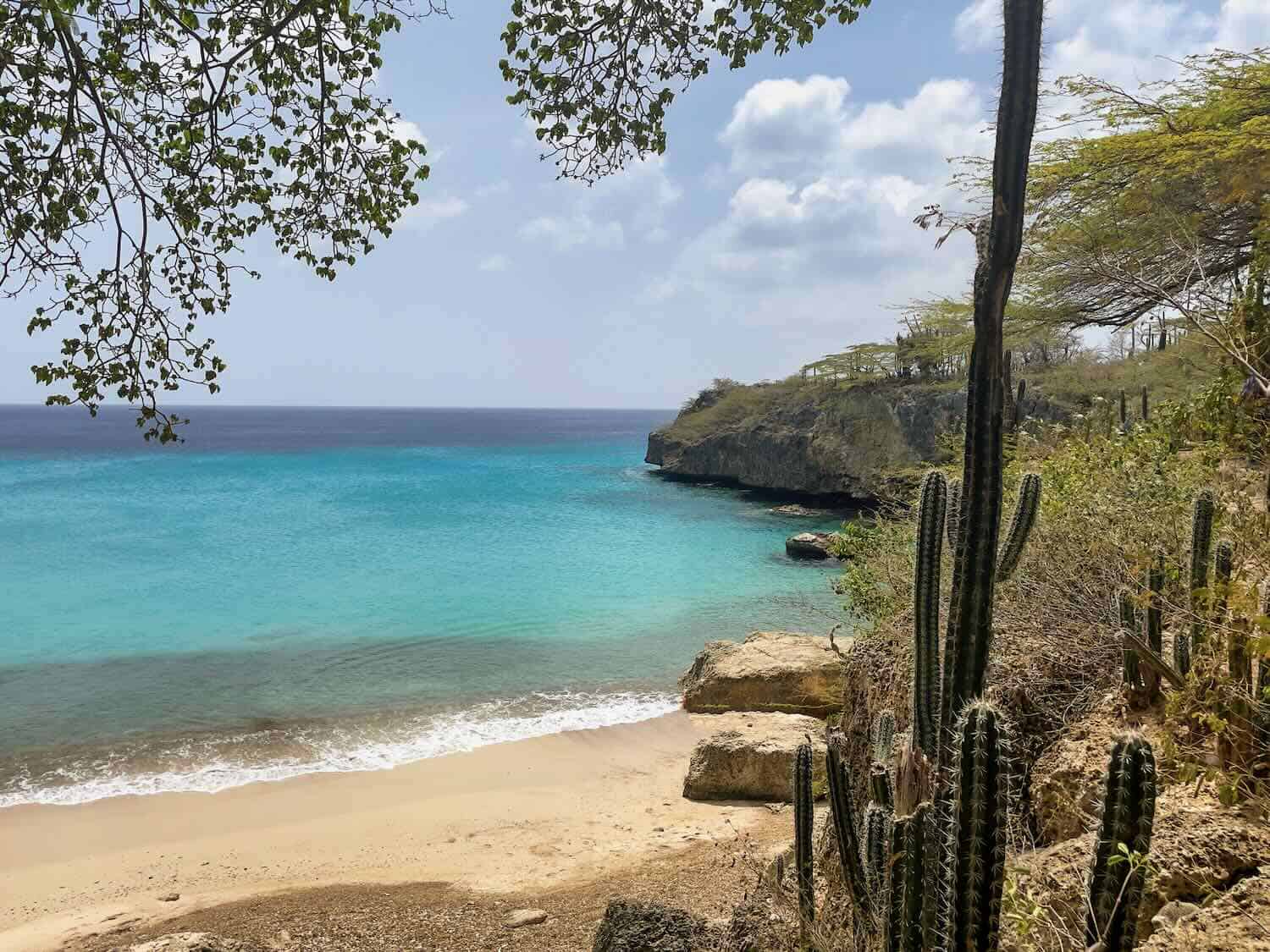
Of course, all Caribbean islands brag about their sun and fun: the watersports, sunset cruises, and shipwreck parties, to name a few. But in Curacao, 35 smaller, more intimate beaches and coves dot the shoreline.
An interesting fact, most of the beaches aren’t really sand but rather a mixture of tiny grains of coral. (Still, it looks like sand; everyone calls it sand!) The little coves permit snorkeling off the beach, and many scuba divers find they can dive without needing a boat.
If you compare Curacao’s beaches to neighboring Aruba, you won’t find a string of resort hotels off a boulevard on one long beach. Aruba attracts about twice the number of tourists, mostly Americans. Dutch vacationers have already discovered Curacao and like to keep it a secret.
Curacao’s most beautiful beaches lie on the northwestern shores. A rental car becomes the best way to get around (reserve here), especially if you stay in Willemstad. It takes less than two hours to drive from bottom to top.
Playa Knip
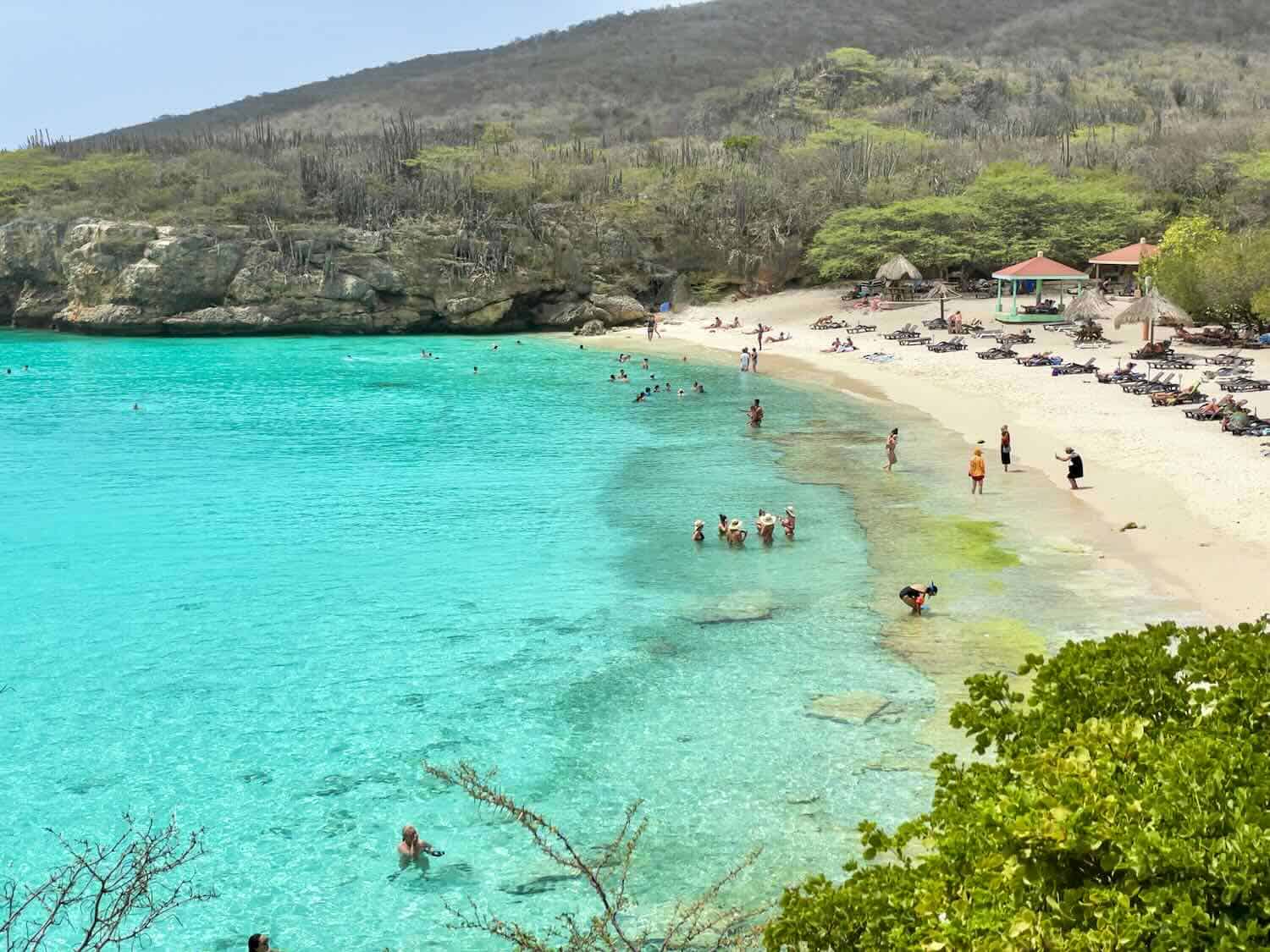
Stop by Playa Knip, the island’s most famous beach, with many amenities – rental beach chairs, umbrellas, bathhouse facilities, and snacks. I enjoyed the most divine fresh fruit smoothie there.
Cas Abao Beach
National Geographic listed Cas Abao Beach as one of the best in the world, but I didn’t get to visit it. If your goal is to swim with sea turtles, head to Playa Grandi. It’s a fishermen’s beach, and their activity attracts the sea turtles.
Blue Bay Beach
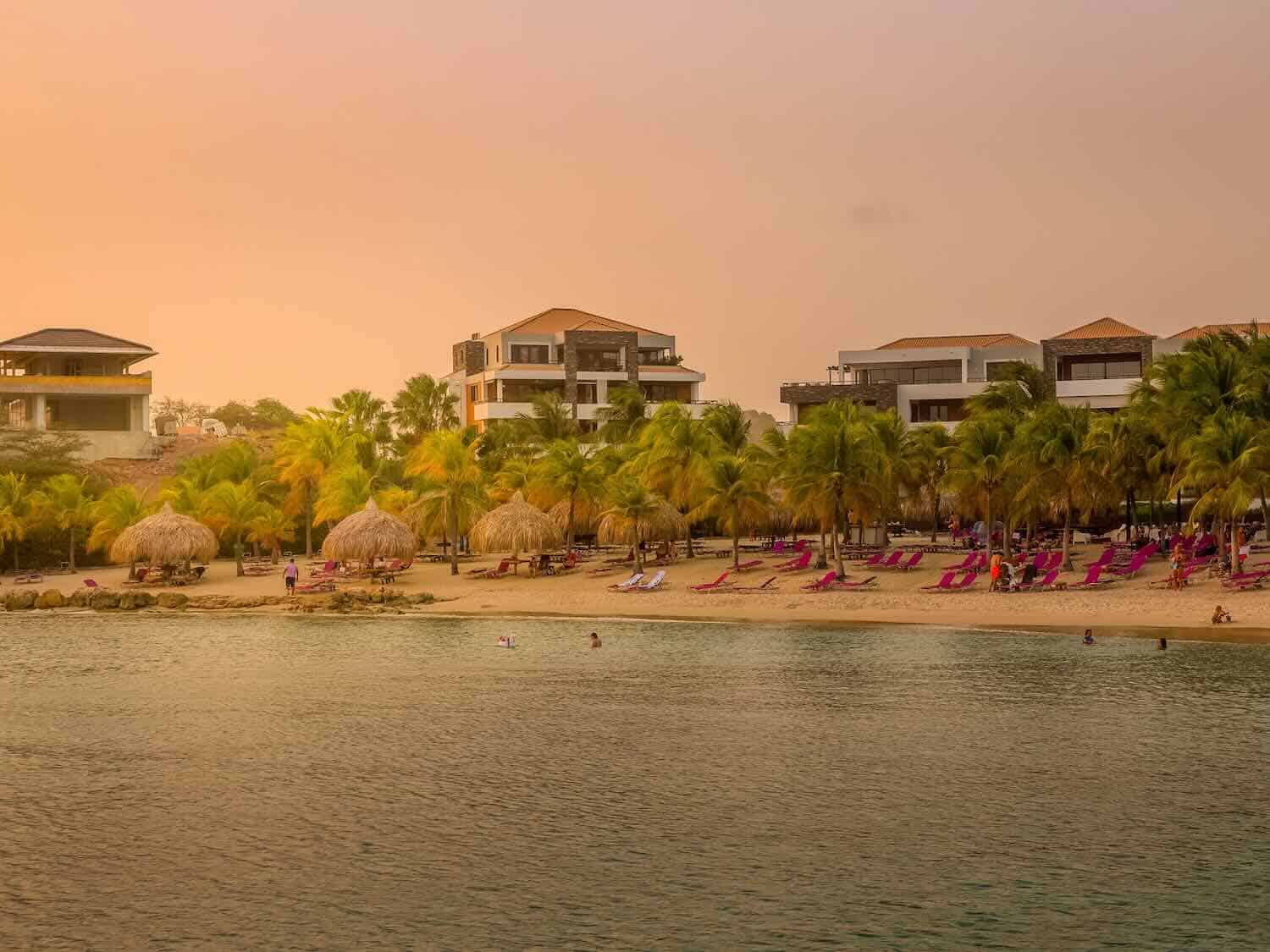
Playa Kalki features hills, limestone cliffs, and an old airplane wreck under the water. Blue Bay is the largest beach with full facilities.
Boomer Travel Tip
Need to pack for a tropical getaway? Check out our tropical gear tips.
Boat trips to Klein, Curacao
Day trips to Klein Curacao, an uninhabited island often called Little Curacao, bring memorable adventures. The 1.2- square mile uninhabited isle lies about 15 miles off the southeast coast of Curaçao.
Visitors see an abandoned pink lighthouse and rusting hull of the Maria Bianca Guidesman, a small oil tanker that wrecked on the island in the 1960s. Its coral reefs and waters remain pristine.
Klein’s beach is longer than any other in Curaçao. Take the plunge and jump into the sparkling turquoise water for a cooling swim, snorkel, or scuba dive.
Like the main island, Klein Curaçao also played a role with the Dutch West India Company during the 17th and 18th centuries. It’s the final resting place of many enslaved Africans who were put in quarantine if they arrived sick after their voyage across the Atlantic.
Miss Ann Boat Trips, BlueFinn Charters Curacao, and Mermaid Tours offer boat trips to Klein Curaçao, and Ocean Encounters will take you scuba diving in its surrounding waters. Viator offers many options for exploring Klein (start here).
For those who suffer from motion sickness, take precautions (I recommend Bonine tablets) as the crossing can be choppy.
More things to do in Curacao
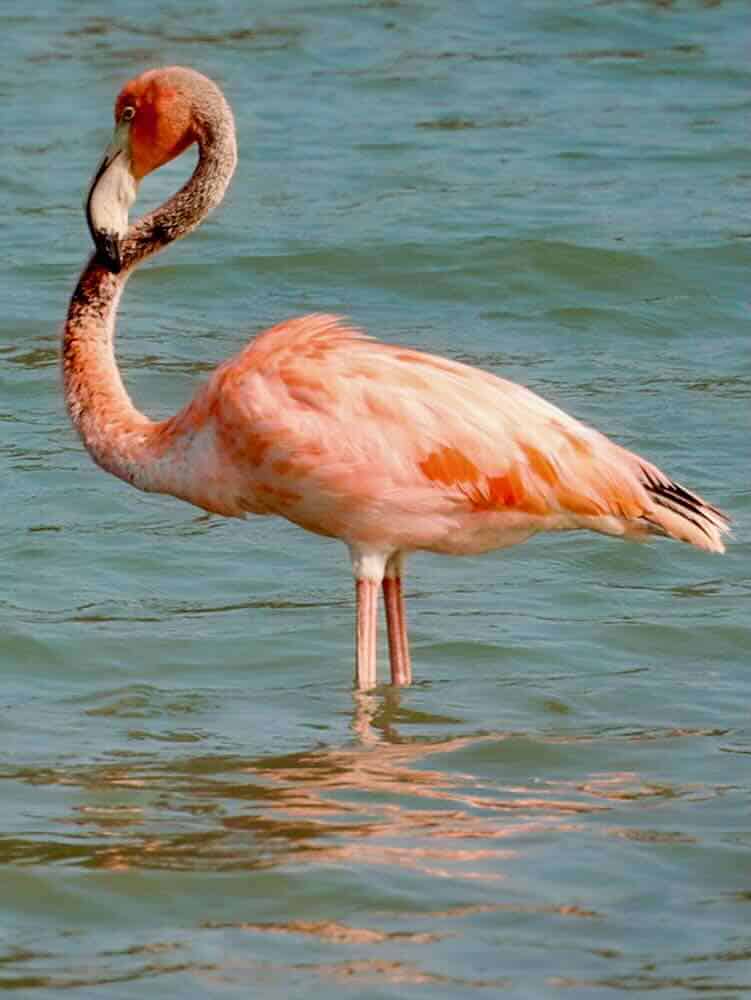
One of my favorite moments in Curcacao was discovering wild flamingos. You may find them close to the road around the Jan Theil salt pans if you are lucky.
The quirky creatures twist and curl their necks around like backyard water hoses. The tranquil water in a lake reflects their coral color and creates a captivating swirl of pinkish tangerine.
Have fun on the water
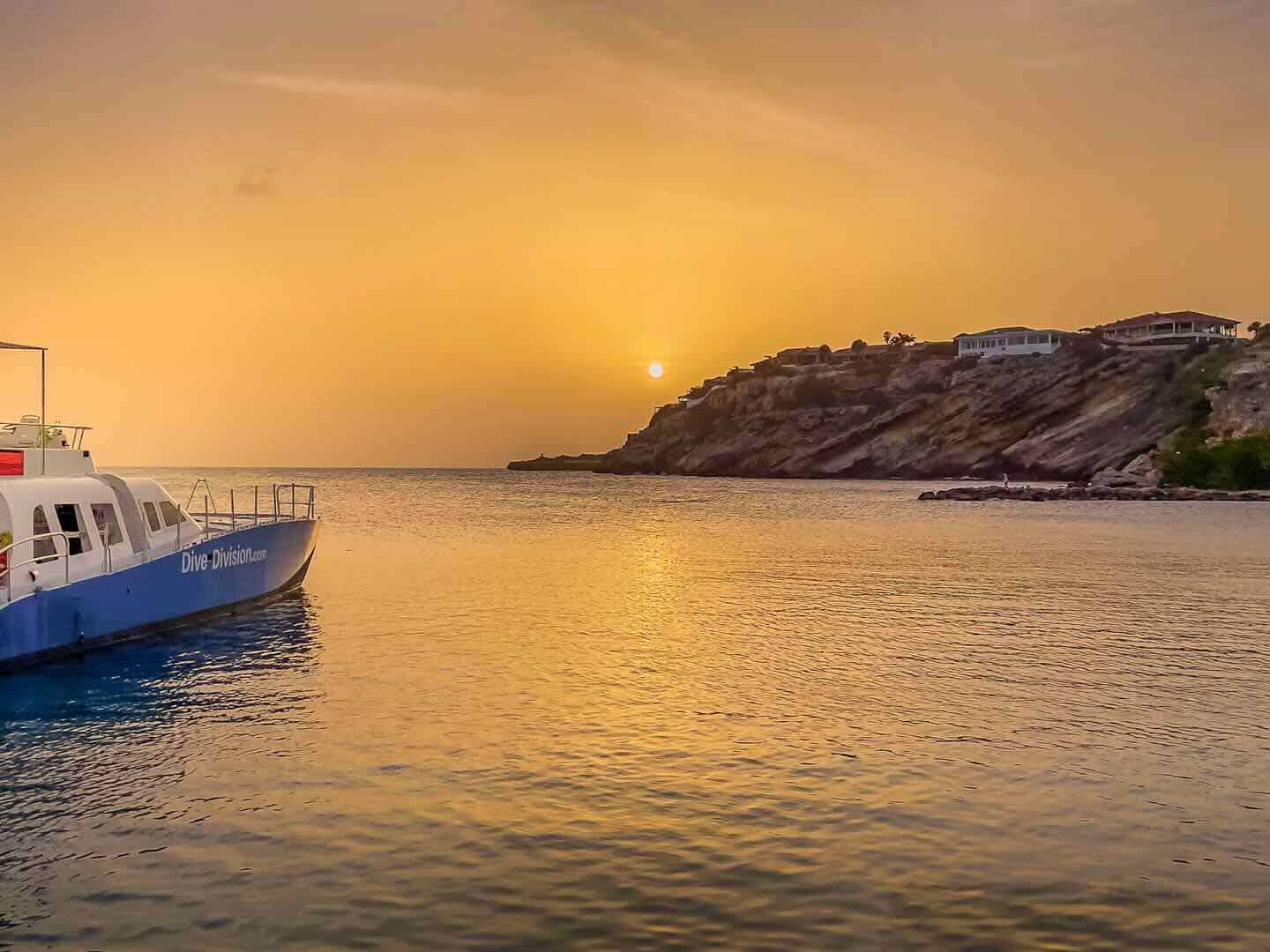
Curacao’s geographical location blesses the island with brisk breezes, so kiteboarding, standup paddleboarding, and sailing rule. If you’re up to the challenge, lessons and equipment are available at many watersports stands.
In addition, Blue Bay Golf and Beach Resort offers fishing charters, catamaran sailing, kayaking, and the best 18-hole golf course. For those wanting something more laid-back, sign up for a leisurely sunset cruise.
Admire the desert-like landscape
Curacao receives little rain, so the landscape remains dry, helping to keep those hurricanes away. Sugarcane can’t grow due to the sacristy of rainfall. Those picturesque sugar mill ruins, so common throughout the Caribbean, won’t be found on Curacao. Neither are there Divi-Divi trees, those windswept to one-side trees on Aruba.
Instead, cacti and scrub bushes dot the arid countryside, as does aloe vera. You can visit an aloe farm and learn about its multiple uses.
Go cycling
Cyclists find themselves amidst desert-like landscapes. While I did not have time to do this, tourists can join organized mountain bike outings to roll along narrow, unpaved roads. These would be difficult to find without a guide.
Explore on an off-road ATV tour
Another option lies on the eastern shores — a three to six-hour rugged off-road ATV and buggy tour.
Tour operators are Wanna Bike Curacao, Criss Cross Cycling Tours, and ATVbuggytous.com. Booking ATV tours on Viator includes free cancellation. Start here.
Curacao National Parks
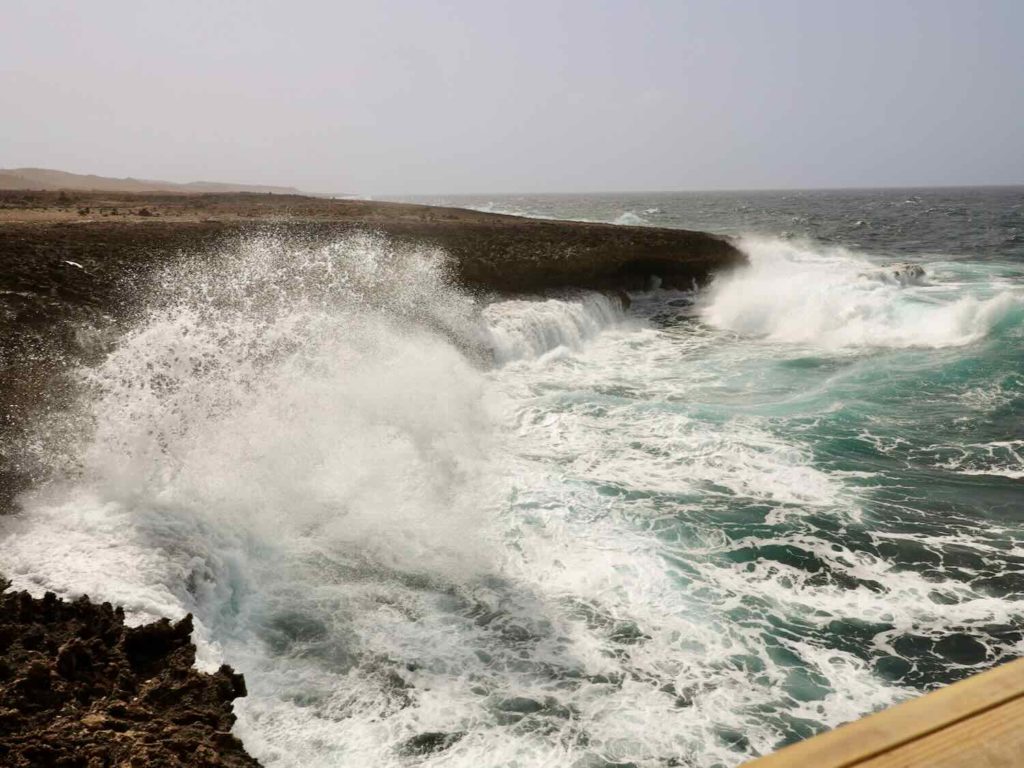
Two national parks offer very different experiences. If you want to climb to the highest point on the island, arrive by 7:00 am at Christoffelpark (official website). A round-trip hike to the summit will take about three hours and rewards a 360-degree panoramic view.
Shete Boka Park (official website) on the northernmost point provides a much more dramatic picture. Thunderous waves bombard the cave-dotted shoreline and send spray skyward.
The boardwalk and viewing platforms offer great photo ops, but be careful and hang on to the little ones. I was fascinated by this place and could have lingered watching the power of nature and hearing its strength.
What to eat in Curacao
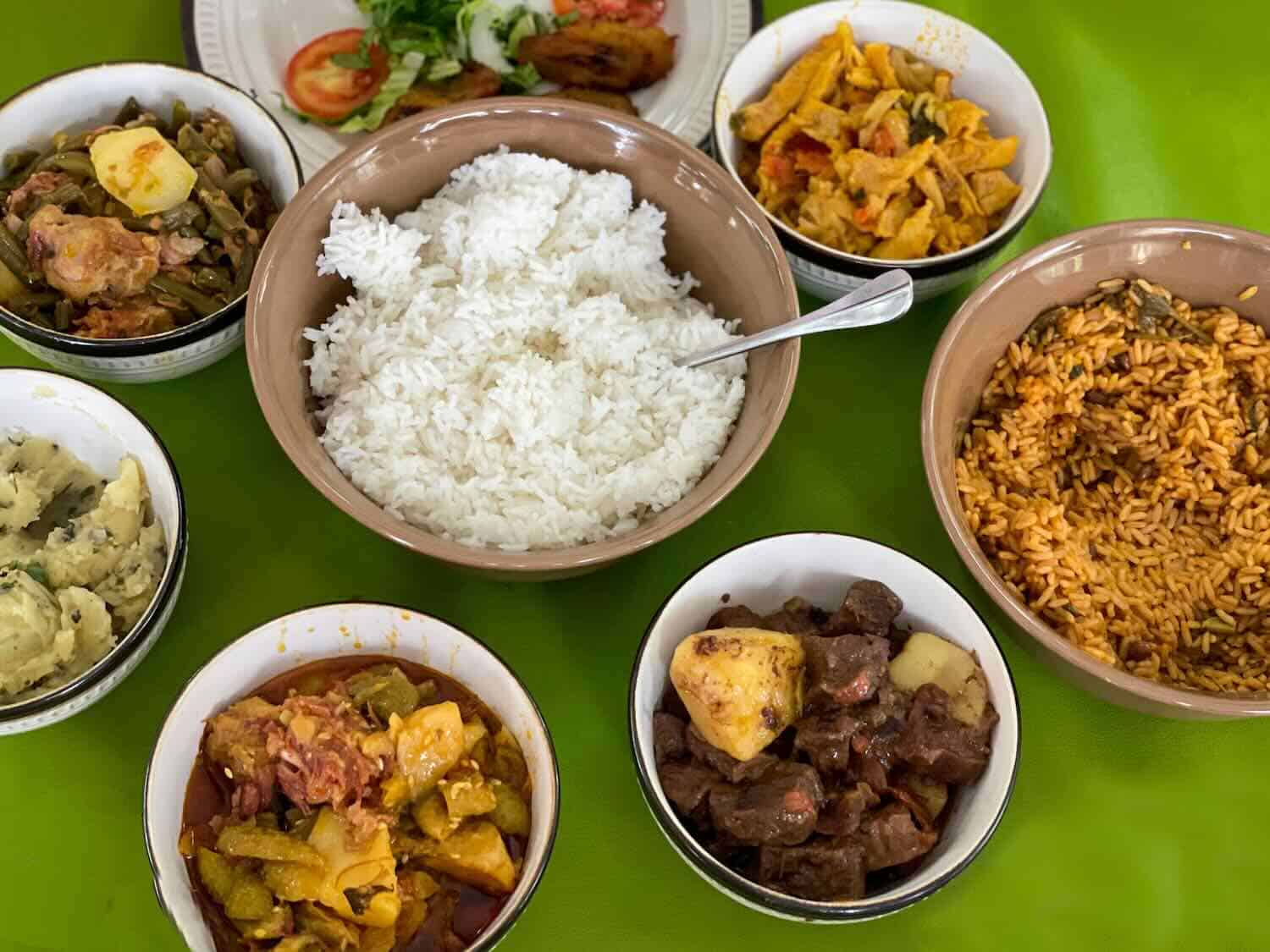
Because of Curaçao’s role in the slave trade, many of today’s Curaçaoans identify deeply with their African heritage. The cuisine relies heavily on local food and spices from Latin America and the Caribbean.
Popular dishes include: stobá (a stew made with ingredients such as papaya, beef, or goat), Guiambo (soup made from okra and seafood- it’s slimy), kadushi (cactus soup), funchi (cornmeal paste similar to polenta), fried plantains, and, of course, fresh fish, usually pan-fried. Some restaurants serve lightly fried lionfish hoping to reduce the invasive species.
Due to the large population of iguanas, you might spot iguana soup on the menu. No surprise, it tastes like chicken!
Foodies will want to eat the genuine Caribbean cuisine at Plasa Bieu in Punda, the Old Market. It’s not fancy or expensive. Enter a pitched-roof food court with basic picnic tables and benches and watch the local homestyle cooks prepare authentic island fare.
Blue Curacao Liqueur
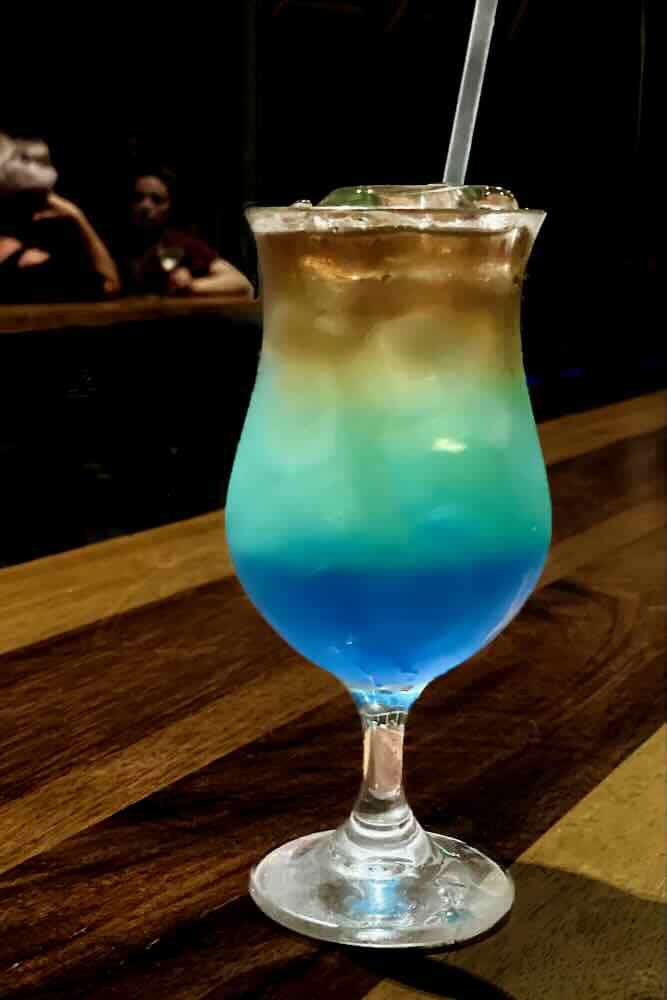
Mixology enthusiasts must visit the yellow 19th-century Landhuis Chobolobo, the Blue Curaçao Liqueur home. Take a guided tour through the distillery and learn about the production of the famous blue liqueur —using the dried zest of a laraha, a variety of bitter orange that only grows in the Caribbean. The liqueur is infused with spices such as cloves, cinnamon, and nutmeg and has a pronounced orange flavor with a slight bitterness.
Initially developed by Edgar Senor in 1896 as an aperitif, Blue Curaçao Liqueur inspired multitudes of cocktails, including the Blue Hawaii, and its imaginative use in the island’s favorite drink, the Blue Lagoon, or classic margaritas. Of course, you’ll receive complimentary tastings.
Curacao with Kids
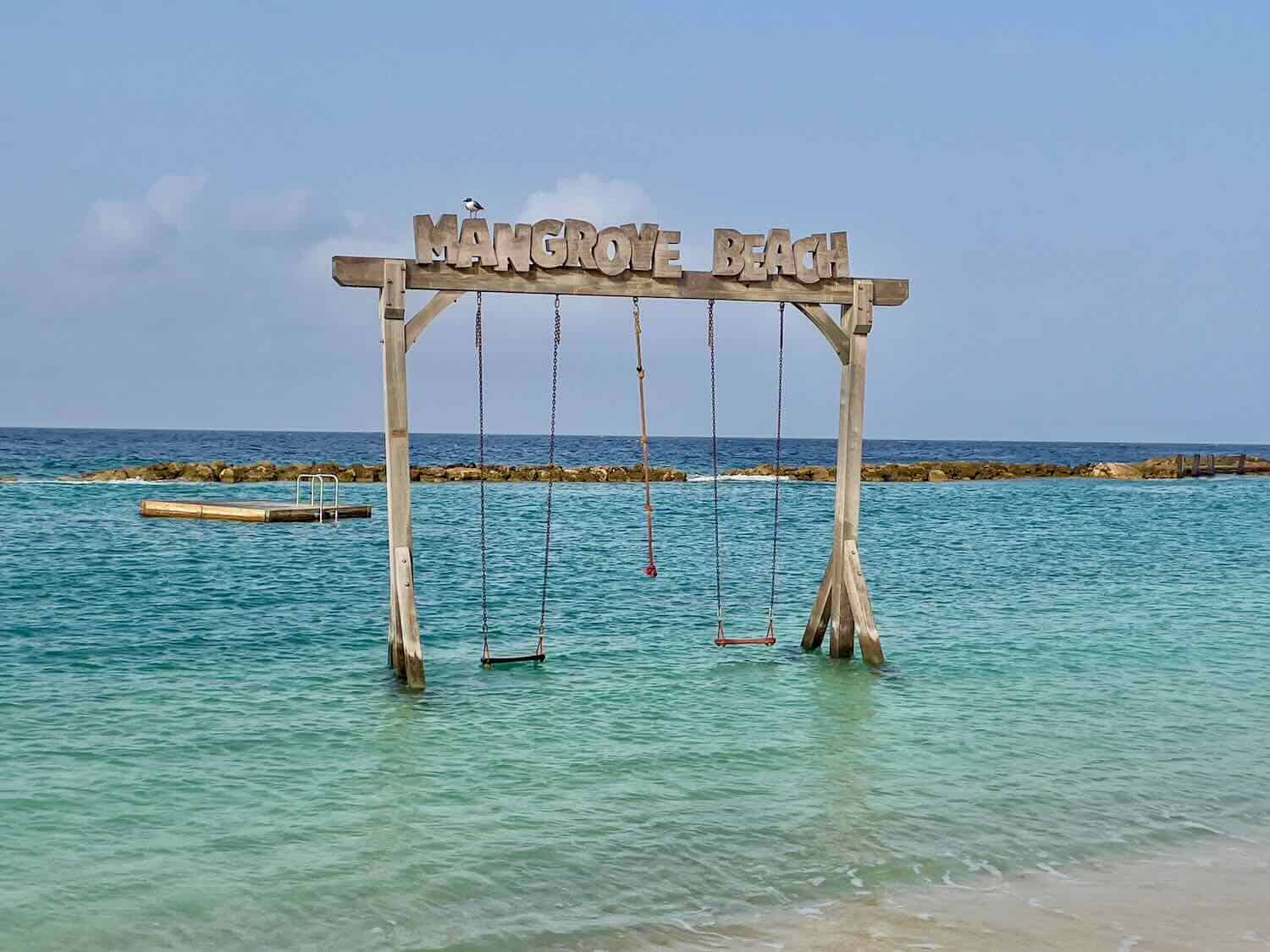
Curacao would be a terrific place to take children or grandchildren. If so, consider staying at an all-inclusive property like the Corendon Mangrove Beach Resort with its incredible waterpark.
The facility offers exciting rides with twists and turns for all ages and a child-friendly area for little ones. The wicked King Cobra course drops and flings daredevils wanting a thrilling challenge. (I skipped it.)
The waterpark is rarely crowded, so the kids will get plenty of turns. Day passes are available for non-resort guests.
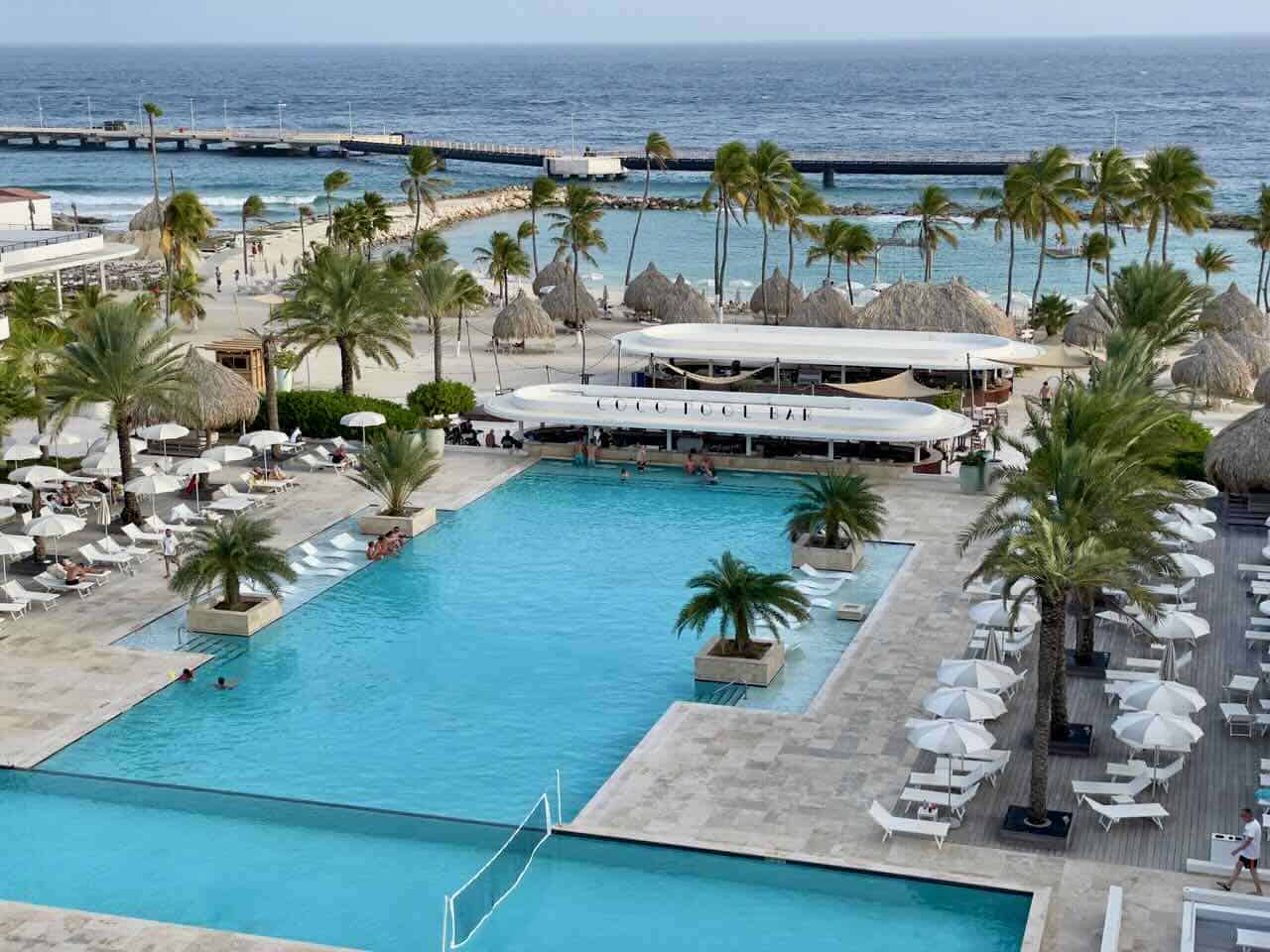
The Mangrove Beach Resort also boasts a fantastic main swimming pool with a swim-up bar, a lap pool that tends to stay quiet, and its own beach. I stayed there and adored the collection.
You’ll discover a giant swing in the ocean off the beach, a popular place for photos. I also enjoyed the live music in the evenings.
Beyond these resort activities, take the kids to Curacao’s sea aquarium, dolphin academy, and an ostrich farm.
Best place to stay in Curacao
Curacao offers a variety of lodging options from vacation rentals, boutique hotels, resorts, to all-inclusive properties.
The Baoase Luxury Resort, rated five-star, presents 12 of 23 units with private plunge pools and is one of the best places to stay in Curacao.
The new Sandals Curacao opened in June 2022 includes 351 rooms or suites and 11 dining options.
Livingstone Jan Theil Resort offers hotel rooms and apartments.
Cruise visitors
Many Caribbean cruises make a stop in Curacao. They typically dock within walking distance of Willemstad, but most cruisers take excursions to the distant beaches. Don’t miss the tour in Willemstad.
Tips for visiting Curacao
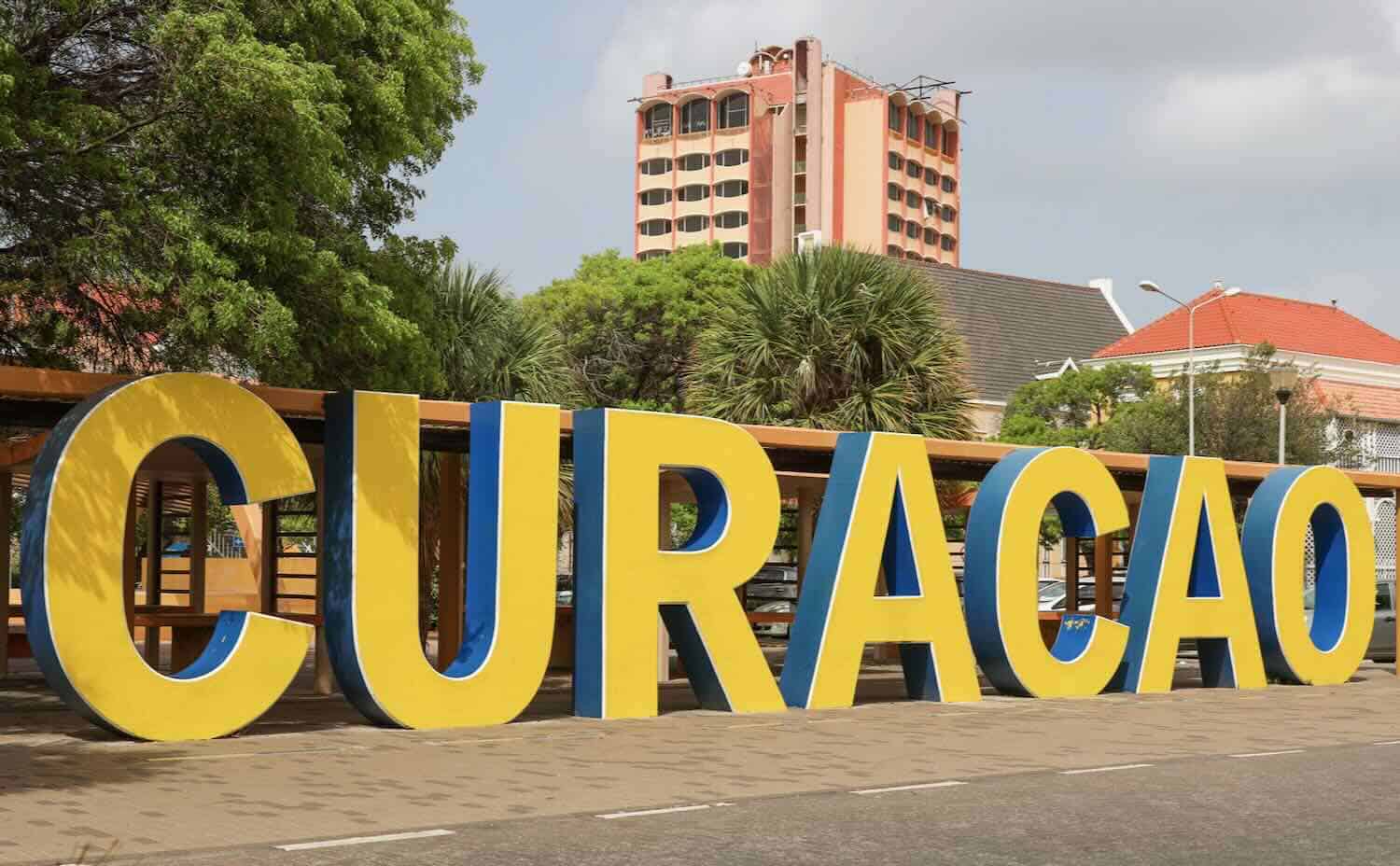
It’s always hot! Year-round temperatures average 80 degrees. No hurricane has made landfall in Curaçao since the U.S. National Hurricane Center started tracking; however, pre-hurricane tropical storms have hit several times.
The official language is Dutch. Most of the population can converse in at least two and often four languages: Papiamentu, a Portuguese-Creole blend, Dutch, English, and Spanish.
The official currency is the Antillean Guilder, but U.S. dollars are readily accepted.
Electricity is 220 volts, meaning you need a converter.
I strongly suggest you rent a car. Driving in Willemstad involves many one-way streets, but the road navigation is easy.
You will find nonstop flights to Curacao from Miami, Charlotte, and New York. Start your search here.
Remember your sunscreen?
Bon Bini!

